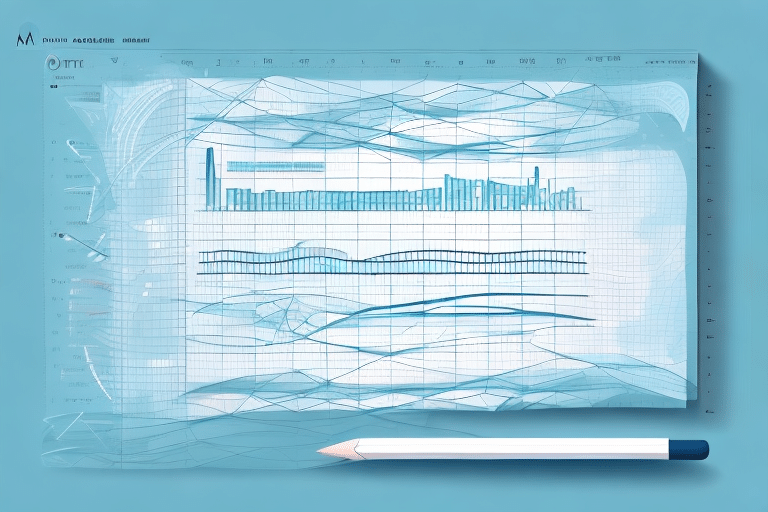Understanding the FedEx Weight Chart
The FedEx Weight Chart is a crucial tool for anyone looking to ship packages through FedEx. It outlines the weight limits for various types of shipments, helping customers calculate shipping costs accurately and ensure their packages are shipped safely and efficiently.
What is the FedEx Weight Chart?
The FedEx Weight Chart details the weight restrictions for different shipment categories offered by FedEx, such as FedEx Express and FedEx Ground. This chart not only helps determine shipping costs but also ensures that FedEx can manage the weight distribution across their transportation fleet, including planes and trucks.
Beyond weight limits, the chart also specifies size restrictions to prevent packages from being too large or too small for FedEx's transportation vehicles. Adhering to these size and weight guidelines helps avoid delays and potential damage during shipping.
How to Use the FedEx Weight Chart
Using the FedEx Weight Chart is straightforward:
- Determine the weight of your package.
- Identify the type of FedEx service you intend to use (e.g., Express, Ground).
- Refer to the weight limit corresponding to your service type in the chart.
If your package exceeds the weight limit, consider repackaging it into smaller units or selecting a different shipping method that accommodates heavier weights, such as Freight Shipping.
Keep in mind that other factors like destination, shipping speed, and package dimensions also influence the final shipping cost. Utilizing tools like the FedEx Rate Finder can provide a more accurate cost estimate.
Types of Shipments and Their Weight Restrictions
FedEx offers various shipment types, each with specific weight and size restrictions:
- FedEx Express International: Up to 150 pounds per package.
- FedEx Ground: Up to 150 pounds per package.
- FedEx Home Delivery: Up to 150 pounds per package.
- FedEx Custom Critical: Accommodates shipments up to 10,000 pounds.
It's essential to verify any additional restrictions, especially for hazardous materials, which may have stricter guidelines or may be prohibited altogether. Always consult the latest FedEx policies or contact a FedEx representative for specific requirements.
Calculating Shipping Costs with the FedEx Weight Chart
To estimate shipping costs:
- Weigh your package accurately.
- Determine the shipment type based on your needs.
- Use the FedEx Rate Finder or consult with a FedEx representative.
Shipping costs typically increase with the weight of the package. Additionally, dimensional weight, which considers the volume of the package, can impact the cost, especially for larger but lighter packages.
Tips for Saving Money on Shipping
Here are strategies to reduce your shipping expenses:
- Optimize Package Weight: Remove unnecessary items to keep the package as light as possible.
- Choose the Right Service: Select a shipping service that balances cost and delivery speed based on your needs.
- Ship During Off-Peak Times: Sometimes, shipping costs can be lower during less busy periods.
- Use a Shipping Calculator: Tools like the FedEx Rate Finder can help identify the most cost-effective options.
Common Mistakes to Avoid
Avoid these pitfalls to ensure a smooth shipping experience:
- Incorrect Weight Measurement: Always use a reliable scale and double-check the weight of your package.
- Improper Packaging: Use sturdy boxes and appropriate packaging materials to protect your items.
- Wrong Shipping Method: Choose a shipping service that aligns with your package's size, weight, and delivery timeframe.
- Incomplete Documentation: For international shipments, ensure all necessary customs forms and invoices are accurately completed.
Understanding Dimensional Weight
Dimensional weight considers the volume of a package in addition to its actual weight. FedEx calculates dimensional weight using the formula:
Dimensional Weight (lbs) = (Length × Width × Height) / 139
If the dimensional weight exceeds the actual weight, FedEx may charge based on the higher dimensional weight. This emphasizes the importance of optimizing your package size to minimize shipping costs.
Frequently Asked Questions
- Q: What types of shipments are covered by the FedEx Weight Chart?
A: The chart covers most FedEx services, including FedEx Express, FedEx Ground, and FedEx Home Delivery. - Q: Are there exceptions to the weight limit?
A: Yes, services like FedEx Custom Critical can handle shipments up to 10,000 pounds. - Q: How often does the FedEx Weight Chart change?
A: The chart is updated periodically to reflect changes in shipping regulations, FedEx policies, and transportation technology. Always refer to the latest version on the FedEx website.
Comparing FedEx Weight Chart Policies with Other Carriers
Different carriers have varying weight and size restrictions. For instance:
- UPS: Similar weight limits to FedEx but may differ in dimensional weight calculations.
- DHL: Often more restrictive for international shipments compared to FedEx.
- USPS: Generally has lower weight limits but competitive pricing for lighter packages.
Comparing these policies helps in selecting the best carrier based on your specific shipping needs.
The Impact of COVID-19 on Shipping and the FedEx Weight Chart
The COVID-19 pandemic has significantly influenced shipping operations:
- Increased Demand: A surge in e-commerce led to higher shipping volumes.
- Policy Adjustments: FedEx adjusted weight and size limits to accommodate changing shipping patterns.
- Safety Measures: Enhanced protocols to protect employees and ensure timely deliveries.
Staying updated with FedEx's current policies during such times is essential for smooth shipping operations.
Expert Advice on Optimizing Your Shipping Strategy
To maximize efficiency and cost-effectiveness:
- Consult with Shipping Experts: Professionals can provide insights tailored to your shipping needs.
- Regularly Review Shipping Policies: Stay informed about any changes in FedEx's weight and size restrictions.
- Invest in Quality Packaging: Proper packaging reduces the risk of damage and additional costs.
- Leverage Technology: Use shipping software and tools to calculate costs and manage shipments efficiently.
Implementing these strategies can lead to significant savings and enhanced reliability in your shipping processes.
Conclusion
Understanding and utilizing the FedEx Weight Chart is essential for anyone looking to ship packages efficiently and cost-effectively. By adhering to weight and size restrictions, calculating shipping costs accurately, and avoiding common mistakes, you can ensure your packages are delivered safely and on time. Additionally, staying informed about policy changes and optimizing your shipping strategy with expert advice can further enhance your shipping experience.






















